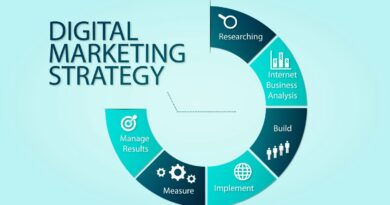21 Fundamental SEO Tips to Boost Your Website’s Visibility
In having a website is like having a storefront in a bustling city. But what good is a store if no one knows it exists? That’s where SEO, or Search Engine Optimization, comes into play. SEO acts like a roadmap, guiding people to your website when they search for something related to what you offer. It’s crucial for boosting online visibility and generating traffic, making it Fundamental for anyone who wants their website to succeed.
Importance of SEO in Online Visibility and Traffic Generation
Imagine you have a fantastic website with great products or content, but it’s like a hidden treasure buried in the depths of the internet. Without SEO, your website might never surface in search engine results, leaving potential visitors unaware of its existence. SEO helps your website climb the ranks in search engine results pages (SERPs), making it more visible to people searching for relevant information, products, or services.
With billions of searches happening every day, search engines like Google act as gatekeepers, determining which websites get seen and which ones remain hidden. By optimizing your website for search engines, you increase its chances of appearing at the top of search results, attracting more clicks, visitors, and potential customers.
Overview of 21 Fundamental SEO Tips to Improve Website Visibility
Now, let’s dive into 21 Fundamental SEO tips that can help improve your website’s visibility:
1. Keyword Research:
When you want to be found online, it’s like playing hide-and-seek with search engines. You need to give them hints about what your website is all about, and that’s where keyword research comes in. Think of keywords as the secret codes that unlock the door to your website. Keyword research is like detective work for your website. By understanding what words and phrases your audience is typing into search engines, you can tailor your content to match their interests. Start by brainstorming relevant keywords, then expand your list using tools like Google Autocomplete and Trends. Analyze your competitors and prioritize keywords with high search volume and low competition. Remember to target long-tail keywords for specificity. Refine your strategy over time based on performance feedback. With diligent keyword research, you’ll unlock the key to better search engine visibility and more targeted traffic to your site.
2. Optimize Meta Tags:
Crafting eye-catching meta tags is crucial for boosting your website’s visibility. Title tags, like headlines, should be concise (around 50-60 characters) and contain target keywords to tell search engines what your page is about. Meta descriptions (150-160 characters) provide a sneak peek of your content, so make them engaging and keyword-rich. Use action words and unique selling points to entice clicks, but stay honest and accurately represent your content. Test different tags to see what resonates best with your audience, and watch your click-through rates soar. With optimized meta tags, you’ll attract more visitors and stand out in search results.
3. Create High-Quality Content:
Creating top-notch content is key to winning over online audiences. Aim for informative, engaging pieces that address what users are searching for. Whether it’s a how-to guide, a product review, or a captivating story, prioritize satisfying user intent. Anticipate their needs and provide valuable insights or solutions. Keep it engaging with visuals, videos, or interactive elements. Remember, quality trumps quantity, so focus on delivering content that resonates with your audience. By consistently delivering high-quality content that meets user needs, you’ll build trust, attract more visitors, and establish your authority in your niche.
4. Improve Page Loading Speed:
Speed up your website for a smoother user experience. Optimize performance by reducing unnecessary elements and minimizing server response time. Compress images and enable browser caching to speed up loading times. A faster website keeps visitors engaged and satisfied, leading to lower bounce rates and higher conversions. Prioritize speed to improve user experience and boost your website’s rankings in search engine results.
5. Mobile Optimization:
It’s crucial to ensure your website looks great and works smoothly on mobile devices like smartphones and tablets. Mobile optimization improves user experience, making it easy for people to navigate your site, read content, and complete actions on smaller screens. To optimize your site, consider responsive design, which automatically adjusts layout and content based on the device. Also, optimize images and minimize load times for faster access. Remember, a mobile-friendly website not only enhances user satisfaction but also boosts your visibility in search engine results. So, prioritize mobile optimization to reach and engage your audience effectively.
6. Secure Your Website:
Protecting your website and your users’ data is paramount in today’s online landscape. Switching to HTTPS encrypts data transmitted between your site and visitors’ browsers, ensuring it remains confidential and secure. This encryption prevents unauthorized access, safeguarding sensitive information like passwords, payment details, and personal data. Moreover, HTTPS improves trust and credibility, as visitors see the padlock icon in their browser, indicating a secure connection. With cyber threats on the rise, migrating to HTTPS not only fortifies your website’s defenses but also enhances your reputation as a trustworthy online entity. Make the switch today to bolster security and user confidence.
7. Build Quality Backlinks:
Boost your website’s visibility and credibility by acquiring quality backlinks from reputable and relevant websites within your industry. Backlinks act as endorsements, signaling to search engines that your content is valuable and trustworthy. Aim for backlinks from high-authority sites with content related to yours, as they carry more weight in search engine rankings. Building a network of quality backlinks not only drives organic traffic to your site but also enhances its authority in your niche. Invest time in outreach and relationship-building to secure valuable backlinks that strengthen your online presence and propel your website to success.
8. Optimize for Local SEO:
Maximize your business’s online visibility by targeting local keywords and optimizing your Google My Business (GMB) listing. Incorporate location-specific terms into your website content, meta descriptions, and title tags to attract nearby customers searching for your products or services. Additionally, claim and verify your GMB listing, ensuring accurate business information like address, phone number, and operating hours. Encourage satisfied customers to leave positive reviews on your GMB profile, further boosting your local SEO efforts. By focusing on local optimization, you’ll outshine competitors in your area and attract more foot traffic and online inquiries, driving growth for your business.
9. Monitor Website Performance:
Keep tabs on your website’s performance using tools like Google Analytics. Monitor key metrics such as traffic, rankings, and user behavior to understand how visitors interact with your site. Track which pages are most popular, where visitors come from, and how long they stay. Use this data to identify areas for improvement and capitalize on strengths. With insights from analytics, you can refine your content, optimize for better search engine rankings, and enhance the user experience. By staying vigilant and responsive to performance metrics, you’ll ensure your website remains effective and competitive in the online arena.
10. Stay Updated with SEO Trends:
Keep pace with SEO trends to propel your online success. Stay vigilant for shifts in search engine algorithms and industry trends, adapting your strategies accordingly. Partner with an SEO company in Dubai to optimize your digital presence. Experienced professionals can navigate local market nuances and tailor strategies to elevate your website’s visibility. Stay informed and agile to maintain or enhance your search engine rankings. With a dedicated SEO partner, you can stay ahead in Dubai’s competitive landscape, ensuring your business stands out amidst the digital noise. Stay updated, stay visible, and stay ahead of the curve.
11. Optimize Images:
Boost your website’s accessibility and SEO by optimizing images. Use descriptive filenames that accurately reflect the image content. Additionally, include descriptive alt text for each image, providing context for visually impaired users and search engines. Optimized images improve user experience, making content more accessible to all visitors. Moreover, search engines rely on alt text to understand image content, boosting your site’s visibility in search results. By prioritizing image optimization, you enhance both accessibility and SEO, ensuring your website reaches a wider audience and ranks higher in search engine rankings. Invest in image optimization for a more inclusive and search-friendly website.
12. Use Heading Tags:
Improve the organization and readability of your content by utilizing heading tags (H1, H2, etc.). Heading tags provide structure, guiding readers through your content and breaking it into digestible sections. Use H1 for main headings and H2, H3, etc., for subheadings to create a hierarchy. This not only enhances user experience but also helps search engines understand the relevance and context of your content. By incorporating heading tags effectively, you make your content more scannable and engaging for readers while boosting its SEO performance. Prioritize heading tags to create well-structured and reader-friendly content.
13. Internal Linking:
Improve your website’s navigation and SEO by incorporating internal links. Link relevant pages within your website to guide visitors to related content and provide a seamless browsing experience. Internal links not only help users discover more of your valuable content but also distribute authority and relevance throughout your site, boosting SEO performance. By strategically placing internal links, you increase the visibility and accessibility of important pages while establishing a logical hierarchy. Prioritize internal linking to improve user engagement, increase page views, and strengthen your website’s SEO foundation. Harness the power of internal links for enhanced navigation and search engine optimization.
14. Create Engaging Meta Descriptions:
Craft compelling meta descriptions to entice clicks from search results. These brief snippets serve as a window into your webpage, offering users a glimpse of what to expect. Write clear, concise descriptions that highlight the value proposition of your content and encourage curiosity. By incorporating relevant keywords and a call-to-action, you can attract more clicks and increase traffic to your site. Engaging meta descriptions not only improve click-through rates but also contribute to a positive user experience. Invest time in crafting captivating meta descriptions to drive clicks, boost engagement, and elevate your search visibility.
15. Optimize for Voice Search:
Adapt your SEO strategy for voice search by anticipating how users might phrase their queries verbally. Voice search often involves more conversational and long-tail keywords compared to text-based searches. Consider user intent and natural language patterns when optimizing your content. Focus on providing direct answers to common questions and structuring content in a format that’s easy for voice assistants to understand. By optimizing for voice search, you can enhance your website’s visibility and capture valuable traffic from voice-enabled devices. Stay ahead of the curve by optimizing your content to match the way users speak and search.
16. Utilize Social Media:
Maximize your online presence by leveraging social media platforms to promote your content. Share blog posts, videos, and other valuable content across popular social networks like Facebook, Twitter, Instagram, and LinkedIn. Engage with your audience by responding to comments, asking questions, and sharing user-generated content. By actively participating in social media communities, you can build brand awareness, drive website traffic, and foster meaningful connections with your audience. Don’t miss out on the opportunity to reach a wider audience and amplify your message. Harness the power of social media to grow your online presence and achieve your business goals.
17. Implement Schema Markup:
Boost your website’s visibility in search results by implementing schema markup. Schema markup provides search engines with additional context about your content, helping them better understand its relevance and meaning. By structuring your data with schema markup, you can enhance rich snippets and improve the display of your listings in search engine results pages (SERPs). This increased visibility can lead to higher click-through rates and more qualified traffic to your site. Take advantage of schema markup to stand out in search results and provide users with more informative and engaging snippets.
18. Fix Broken Links:
Improve your website’s user experience by regularly checking for and fixing broken links. Broken links frustrate visitors and disrupt their browsing journey. Use online tools or website plugins to scan your site for broken links and address them promptly. Ensure all internal and external links are functional and lead to relevant content. By maintaining a seamless navigation experience, you keep visitors engaged and satisfied. Additionally, fixing broken links boosts your website’s credibility and authority in the eyes of search engines. Prioritize this simple yet impactful task to enhance user experience and optimize your website’s performance.
19. Long-Tail Keywords:
Incorporate long-tail keywords into your content strategy to capture user intent accurately. Long-tail keywords are specific phrases that reflect what users are searching for. Unlike short, generic keywords, long-tail keywords offer a more targeted approach, attracting users who are closer to making a decision. Conduct keyword research to identify relevant long-tail phrases related to your niche. Then, integrate these keywords naturally into your website content, blog posts, and product descriptions. By optimizing for long-tail keywords, you increase the likelihood of attracting qualified traffic and improving conversion rates. Tailor your content strategy to match user intent and drive meaningful engagement.
20. Encourage User Engagement:
Drive interaction on your website by encouraging users to leave comments, share content, and provide reviews. User engagement signals relevance to search engines, potentially improving your website’s visibility in search results. Encourage feedback and discussion by responding to comments and sharing user-generated content. Additionally, make it easy for visitors to share your content across social media platforms. By fostering a vibrant online community, you not only enhance user experience but also strengthen your brand’s authority and credibility. Prioritize user engagement strategies to build meaningful connections with your audience and amplify your online presence.
21. Create a Sitemap:
Enhance your website’s visibility in search results by creating and submitting a sitemap to search engines. A sitemap acts as a roadmap, guiding search engine crawlers to discover and index all your web pages efficiently. Include Fundamental pages and updates in your sitemap to ensure thorough coverage. Additionally, regularly update and submit your sitemap to reflect changes on your website. By providing search engines with clear navigation, you improve the likelihood of your content appearing in relevant search queries. Prioritize creating and maintaining a sitemap to optimize your website’s crawlability and overall search engine performance.
Final Words:
SEO, consistency and adaptability are key. Implementing the 21 Fundamental SEO tips can significantly enhance your website’s visibility and performance. Remember, SEO is an ongoing process that requires patience, diligence, and a willingness to evolve with changing trends. By prioritizing user experience, creating high-quality content, and staying informed about industry updates, you’ll position your website for long-term success. Keep experimenting, analyzing, and refining your strategy, and watch as your website climbs the ranks and attracts more organic traffic. Happy optimizing!
FAQs
Why is SEO important?
SEO is crucial for increasing your website’s visibility online. By ranking higher in search results, you can attract more visitors, increase brand awareness, and drive conversions.
What are the 21 Fundamental SEO tips?
The 21 Fundamental SEO tips include keyword research, on-page optimization, off-page optimization, technical SEO, content optimization, local SEO, monitoring and analysis, staying updated with SEO trends, and more.
How do I conduct keyword research?
Keyword research involves identifying relevant keywords and phrases that your target audience is searching for. Use tools like Google Keyword Planner, SEMrush, or Ahrefs to discover high-volume keywords with manageable competition.
How do I build quality backlinks?
Building quality backlinks involves acquiring links from reputable and relevant websites in your niche. You can do this through guest blogging, creating valuable content, and networking with other website owners.



